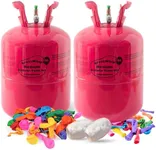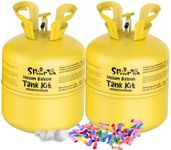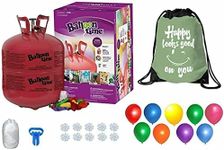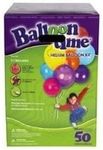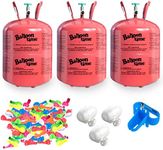Buying Guide for the Best Helium Tank
Choosing the right helium tank can be crucial for various activities, such as inflating balloons for a party, scientific experiments, or industrial uses. The key is to understand your specific needs and match them with the appropriate tank specifications. Here are some important factors to consider when selecting a helium tank.Tank SizeTank size refers to the volume of helium the tank can hold, usually measured in cubic feet or liters. This is important because it determines how many balloons you can inflate or how much helium you have for your specific use. Small tanks (up to 14 cubic feet) are suitable for small parties or events, medium tanks (15-50 cubic feet) are good for larger gatherings or moderate industrial use, and large tanks (over 50 cubic feet) are ideal for large events or extensive industrial applications. Choose a tank size based on the number of balloons you need to inflate or the volume of helium required for your task.
Tank MaterialHelium tanks are typically made from steel or aluminum. The material affects the tank's weight, durability, and portability. Steel tanks are heavier and more durable, making them suitable for stationary use or industrial applications. Aluminum tanks are lighter and easier to transport, ideal for events or situations where mobility is important. Consider where and how you will use the tank to decide which material is best for you.
RefillabilitySome helium tanks are disposable, while others are refillable. Disposable tanks are convenient for one-time use, such as a single event or party, and do not require a return or refill process. Refillable tanks are more cost-effective in the long run and are better for frequent use or ongoing needs. If you plan to use helium regularly, a refillable tank is a better investment. For occasional use, a disposable tank might be more convenient.
Pressure RatingThe pressure rating of a helium tank indicates the maximum pressure the tank can safely hold, usually measured in PSI (pounds per square inch). This is important for safety and efficiency. Higher pressure tanks can store more helium in a smaller volume, making them more efficient for transport and storage. For general use, a standard pressure rating is sufficient, but for industrial or scientific applications, you may need a higher pressure rating. Always ensure the pressure rating matches your usage requirements and safety standards.
Valve TypeThe valve type on a helium tank determines how you control the release of helium. Common types include standard valves, which require a separate regulator, and built-in regulator valves, which offer more convenience and control. Standard valves are suitable for users who already have a regulator or need precise control over helium flow. Built-in regulator valves are easier to use and are ideal for casual users or events. Choose a valve type based on your familiarity with helium tanks and the level of control you need.

